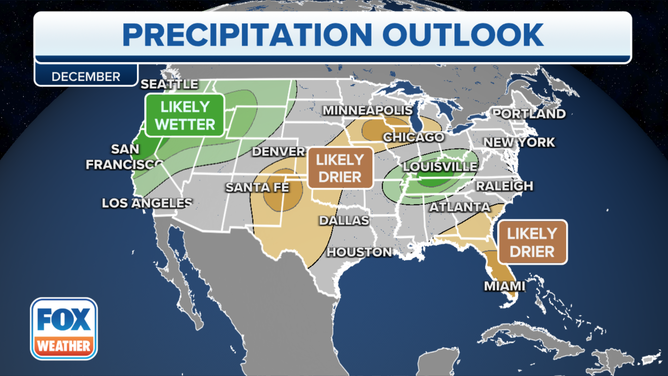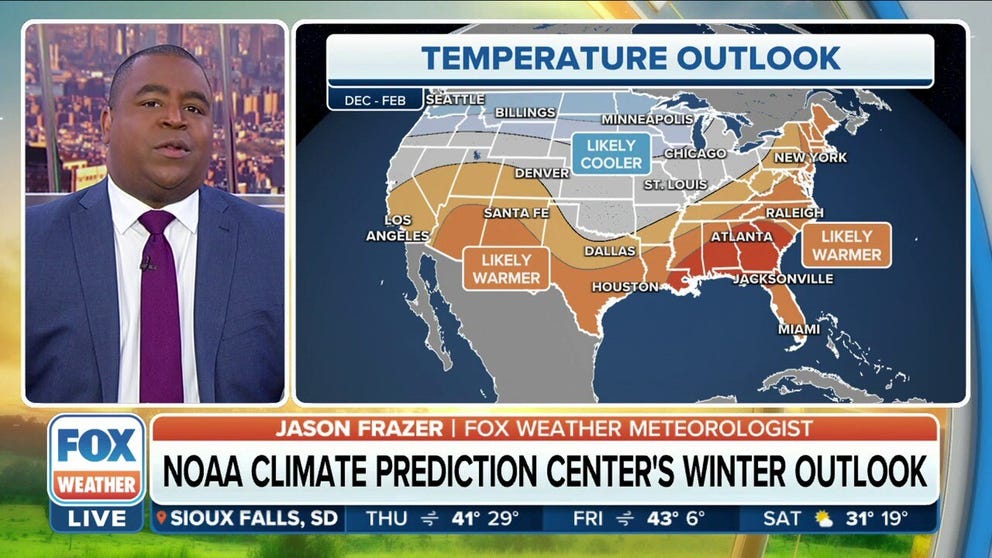December winter weather outlook: Cold air to win out over northern US
As expected with a La Niña pattern, the northern tier of the country is expecting an invasion of cold air over the holiday season. Communities in the Pacific Northwest and Ohio Valley could see increased precipitation.
Winter weather outlook: Colder temps expected in northern tier of country, South to stay warmer
The National Oceanic and Atmospheric Administration believes classic La Niña conditions could take hold in December, with below-average temperatures expected in the northern tier of the country and much of the South escaping the cold.
The National Oceanic and Atmospheric Administration believes classic La Niña conditions could take hold in December, with below-average temperatures expected in the northern tier of the country and much of the South escaping the onslaught of Old Man Winter.
A recently released outlook by NOAA depicted the probability of regions experiencing above or below-average temperatures and precipitation during the final month of 2022.
Forecasters believe the cold air will stretch from the Pacific Northwest into the upper Mississippi Valley thanks to a series of high-pressure systems in Canada.
Climate models show Arctic air intruding into the country but not making it through the entire lower 48.
LA NINA WINTER 2022-23 COULD MEAN TORNADO OUTBREAKS, BLIZZARDS AND EVERYTHING IN BETWEEN
Communities from the Southwest to Florida have an above-average chance of seeing warmer-than-average temperatures, keeping many areas well above the freezing mark.

December temperature forecast from NOAA's Climate Prediction Center.
(FOX Weather)
Forecasters caution a considerable uncertainty exists with the outlook due to varying model guidance.
Precipitation, whether it falls in the form of rain or snow, could be more topsy-turvy, with some areas expected to see a greater likelihood of above-average accumulations and others that will continue to add to an ongoing deficit.
NOAA believes much of the West, northern Great Plains and the southern Ohio Valley could be in store for above-average precipitation.
Areas in the Southeast, Upper Midwest, and southern Great Plains likely will miss out on much of the precipitation if the NOAA outlook is accurate.

December precipitation forecast from NOAA's Climate Prediction Center.
(FOX Weather)
WHEN DOES WINTER REALLY START? IT DEPENDS ON WHO YOU ASK
During a typical winter, most of the country experiences its coldest weather during January but depending on climate patterns, the heart of winter can deviate drastically from average.
Patterns can vary depending on whether a La Niña is considered to be weak or moderate in strength, and a warm start to the winter does not indicate how the season will finish as a whole.
Meteorological winter begins on December 1 and runs through February.
